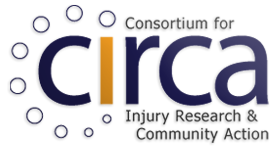History
Pitt has an extensive history of injury research and control. The University formally established the Center for Injury Research and Control (CIRCL) with internal funding in July 1992, recognizing the large public health burden caused by trauma and injuries in the region and the United States. The Center was established by the University, not as a vessel for individual research, but as an independent dynamic center charged with the goal of integrating the vast injury research being done at the university. Since that time it has been directed by nationally recognized leaders; Jeffrey Coben, Donald Marion, Hank Weiss, David Adelson, and Anthony Fabio. The center continues in this tradition under the current leadership of Dr. Fabio.
The Center for Injury Research and Control (CIRCL)
The Center for Injury Research and Control (CIRCL) was established in July 1992. In September, 1995 the Center became one of 13 centers in the country to receive official designation as an Injury Control Research Center by the Centers for Disease Control and Prevention (CDC).
1992
In July, 1992 the University formally established the Center for Injury Research and Control (CIRCL) under the leadership of Jeff Coben, MD, in the Department of Emergency Medicine. The impetus for establishing the Center came from the Health Sciences sector in recognition of the large public health burden caused by injuries in the region. The goal of the Center was to coordinate injury control research, education, information gathering and dissemination, and public service. Thereafter, a small but spirited cadre of Center faculty and staff successfully established collaborative relationships with local and state health departments and garnered substantial extramural support.
In 1995, CIRCL was awarded a three-year “feasibility” Center grant from the Centers for Disease Control with “Acute Care: Systems, Solutions, and Savings” as its theme. In adopting this theme, the Center was responding to “Injury Control in the 1990’s: A National Plan for Action.”
1997
In May 1997, Donald Marion, MD was appointed as the new Center Director. Dr. Marion built on the success of the initial feasibility funding from the CDC for CIRCL, developing and guiding high-quality research accomplished through multi-disciplinary efforts into a fully CDC funded ICRC in 1998. Dr. Marion’s goal was to assure the conduct of high-quality research accomplished through multi-disciplinary efforts. The Theme of the center was “Traumatic Brain Injury (TBI) and Spinal Cord Injury (SCI): Prevention, Acute Care and Rehabilitation”.
2002
In November 2002, Hank Weiss, PhD, MPH was appointed by the vice-chancellor of the health sciences as the new director. The unifying theme under Dr. Weiss was a unique population concentration on Women and Children with an emphasis on prevention, acute care and rehabilitation of neurological injury.
Circa 2008 – A new era
In February 2008 Dr. Fabio was named CIRCL’s new Director by Arthur Levine, MD, the Senior Vice-Chancellor of the Health Sciences. Under Dr. Fabio’s leadership the Center has refocused its theme into Community Based Injury Prevention and transitioned to the Graduate School of Public Health under the support of the University. To efficiently carry out the mission, the center was reorganized into a University-wide consortium. It is now housed within the Graduate School of Public Health but has members from across the university and community spectrum.
CIRCA’s Mission
The mission of CIRCA is to understand how the social environment affects injury risk and how social norms, community-based interventions, public policy and environments can be altered to reduce the occurrence, severity and consequences of injury.
